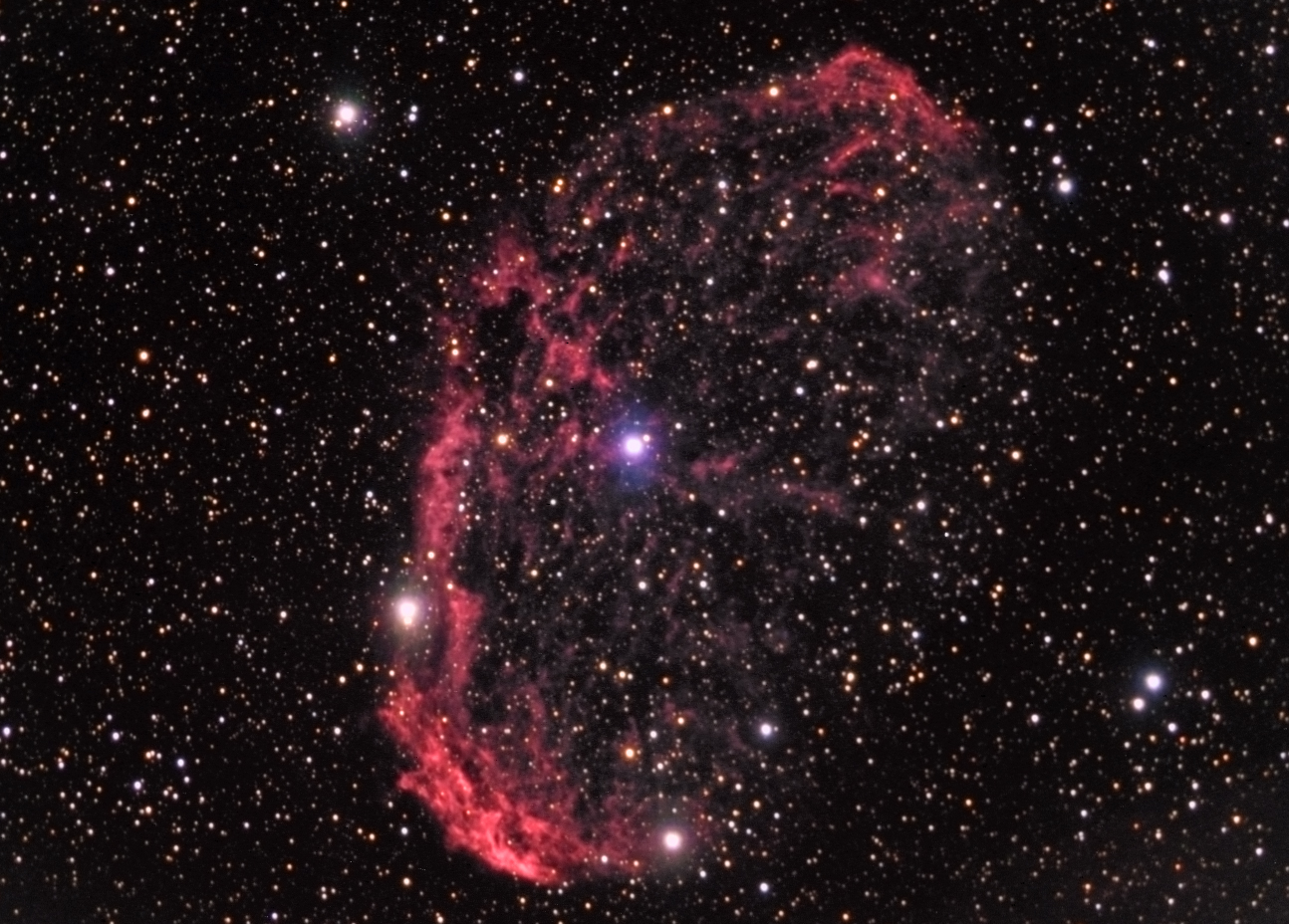

NGC6888: This is a nebula formed by the action of the central star (the huge blue star at the center of the nebula) expelling its outer gases as it begins the process of dying. At the first stages of its death throes, the star became a red super-giant, and gently puffed out its outer layers, approximately 250,000 years ago. Then it became a type of star called a Wolf-Rayet, a rare, short-lived super-hot star, which started expelling gas at a very high rate (an amount of mass equal to our sun's entire mass each 10,000 years), and at very high speeds, which caused the expelled gas to assume something of a shell shape. It is thought that the central star will become a supernova in the next million years. The nebula is about 4,700 light years from Earth and is roughly 16 by 25 light years in dimension.
Copyright 2003 Mark de Regt